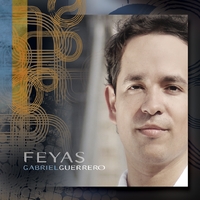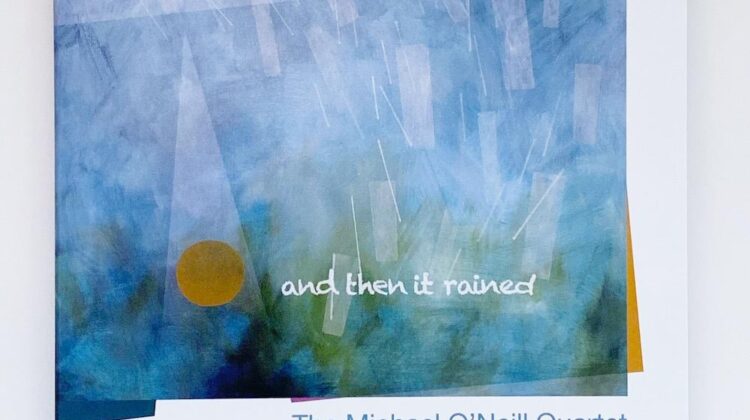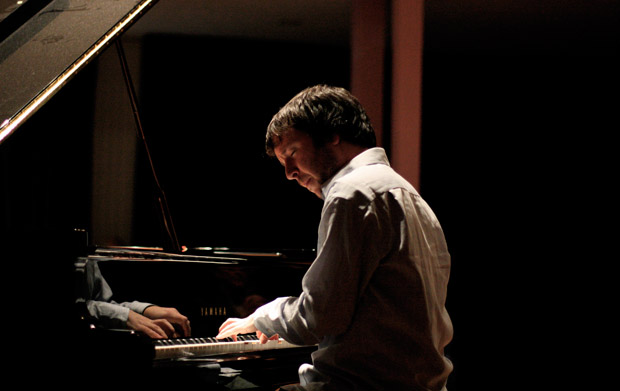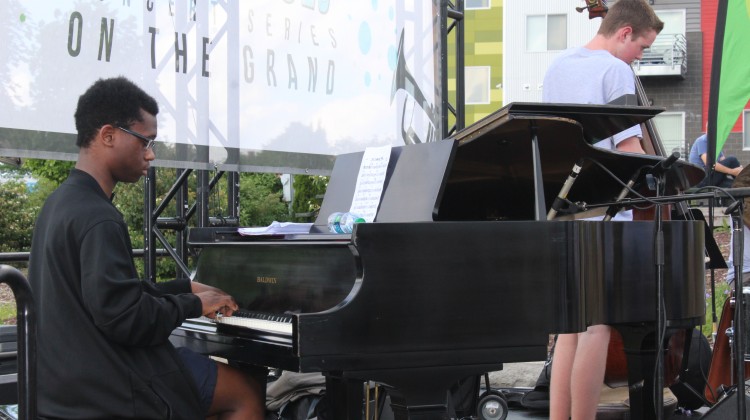Eliane Elias is on a winning streak, and that’s saying something. She already established an individualistic voice on jazz piano for the past 37 years. In fact, having earned two GRAMMY awards in two of the last three years, Elias may be at a height of her career.
Even so, she continues her search for more musical possibilities by going back to the future. Finally, whoever was holding the rights to the songs from Man of La Mancha has allowed the release of recordings of the Broadway show’s music by others than the talent contracted with the Broadway producers.
Elias had already been an admirer of the music from the 1965 production, which won five Tony Awards, including Best Musical and Best Original Score, and which made a star of Best Actor Richard Kiley. Of course, other Broadway musicals had intervened by the time that Mitch Leigh, Man of La Mancha’s composer, approached Elias thirty years later with the idea of a fresh re-interpretation of the music because he believed it deserved renewed recognition. Now, Elias’s album of the music from Man of La Mancha finally is being released. It’s telling that Elias is still proud of her album of 23 years ago, rather than shying away from the earlier recording due to changes in style or technique over the course of two decades. Her undiminished pride suggests that she has performed at a high level throughout her entire career.
Moving to the United States from Brazil in 1981, Elias started at the top, her talent being immediately recognized as she joined Steps Ahead with Michael Brecker, Eddie Gomez, Mike Mainieri and Peter Erskine. After that, her forward progress in the American jazz scene continued through her now-26 albums, consistent and distinctive as a result of her effortless technical fluidity and Latin musical sensibility.
Elias incorporated those elements into her long-languishing album, Music from Man of La Mancha. Though jazz musicians have selectively chosen to interpret songs from Broadway musicals, most famously John Coltrane’s influential version of “My Favorite Things” from The Sound of Music, surprisingly few have recorded entire albums dedicated to one show. The Broadway play most recorded by jazz musicians is West Side Story, whose music captured the imaginations of Cal Tjader, Oscar Peterson, Bill Barron, André Previn, and most notably, Stan Kenton. There were lesser known Broadway appreciations like Shelley Manne’s recording of the music from My Fair Lady. Gomez and Mark Kramer recorded an invigorating duo version of Fiddler on the Roof. I’m still waiting to hear 76 trombones in a recording or live on stage.
Nonetheless, Elias’s may be the only jazz album dedicated to Man of La Mancha. The delayed timing of its release reminds audiences of its music’s balance of vigor and delicacy, appropriate characteristics of Elias’s style as well. It appears that Elias chose her favorites among the show’s songs, or else she chose the ones that are most amenable to a jazz interpretations. For example, it might have been fun to hear what Elias would have done with “Moorish Dance” or “Golden Helmet of Mambrino.” However, she chose the songs that provided the best opportunities for memorable re-arrangement under an album’s length, recommended at that time, of 60 minutes.
It appears that Elias put much thought into her choices of musicians too. Gomez appears with drummer Jack DeJohnette on some of the tracks, while drummer Satoshi Takeishi, percussionist Manolo Badrena and bassist/husband Marc Johnson back up Elias on the others. Once again, Elias sought to achieve a balance, this time between jazz and Latin artistic sensibilities, by choosing first-call, and indeed legendary, jazz musicians based upon the potential for their contributions to the distinctive moods contained within the songs.
A singer too, Elias understood the dramatic pauses and heightened emotions that Leigh sought to convey as the narrative of the play moved on. Her freshening of the music, while retaining its intentions to connect with audiences, makes the album all the more effective. All instrumental, Music from Man of La Mancha nonetheless contains non-verbal lyrical intensity originated by an intensely imaginative and imagining lead character. Still, if anything, Elias’s groups underplay the drama as she re-interprets the music for jazz audiences. Indeed, some of her arrangements could suggest the possibilities of the songs as jazz standards for the future. In addition, with due appreciation, Elias allows space within most of the tracks for her accompanists to improvise with the characteristic mastery of their instruments.
While one would expect Elias to lead into the album with the play’s most familiar songs, she saves “Man of La Mancha” and “The Impossible Dream” to near its end of its song sequence. Instead, she opens the album with the less familiar—and no doubt to most, unfamiliar—song, “To Each His Dulcinea.” Elias rearranged it to allow for a beautiful, though brief, new introduction that leads into a flowing and moving statement of the melody, enhanced by the rhythmic uplift of Johnson, Takeishi and Badrena. Elias’s elements of lyrical attention, gradual dynamic accents and extended repeat sections invigorate the song and make one wonder why the play’s music had been ignored for so long.
Leigh and Elias make effective use of three-against-four time signatures, arising from a naturally felt Latin musical tension, That technique occurs in songs like, of course, the play’s show-stoppers, “Man of La Mancha” and “The Impossible Dream,” as well as “Dulcinea.” Elias takes advantage of the suggestions of percussiveness in the three-four lilt to develop Gomez’s thumping bass vamp for “Man of La Mancha” before she evolves into minor-keyed modal improvisation, which itself evolves appropriately enough into DeJohnette’s own remarkable drum solo of masterful restraint and melodic implication. Cannily, Elias converts the nine-eight “The Impossible Dream” and “Dulcinea” (in six-eight and three-four) into straightforward four-four versions to delve into previously unexplored rhythmic possibilities. “The Impossible Dream” moves along without the alternating of long tones (“dream,” “foe”) against the tripleted “the impossible” notes. Instead, Elias creates a pulsating jazz samba of sudden accents, several key changes and affecting re-harmonization. Similarly, “Dulcinea” goes against expectations by abandoning the notes grouped in threes (“never seen thee or touched thee but known thee”) to develop the song into a relaxed ballad in four of arpeggios, pronounced bass lines, surges of volume, and thus emotional connection. Elias rises to the challenge of the seven-eight “What Does He Want of Me” by developing it too into a glittering bossa nova that glides along with the seamless momentum of successive choruses of thrilling improvisation, grace notes aplenty in the upper register, before the repeated endings diminish to DeJohnette’s single cymbal shimmer as if a parade had passed by and disappeared.
Speaking of parades, Elias turns “A Little Gossip,” the album’s final track, into an interpretation containing excitement and an unspoken invitation to join a Pernambucan carnival of fast-paced dancing. “A Little Gossip’s” musical connection to the Broadway original suggests the universality of the joy that music can bring. Elias’s quartet with Johnson, Takeishi and Badrena engage to convert a slowly performed novelty song about talking to oneself into a boiling overflow of imagined leaps and percussive stomps. The fact that Elias begins and ends the album with the infectious enlivening of Man of La Mancha songs of Brazilian-influenced interludes and jazz-influenced modulations indicates her immersion into the play’s music. Instead of using the familiarity of “The Impossible Dream” or “Man of La Mancha” to draw in listeners, Elias instead allowed the music itself to attract and retain listeners.
The voicings of Elias’s shifting chords throughout the album establish the warmth that the songs receive. For example, the melody of “The Barber’s Song” proceeds not from single notes or even conventional chords. Instead, Elias plays the melody, and the interludes, entirely with gliding dense chords in the middle register.
Finally receiving approval to release the album, Eliane Elias proves—as did Leigh, Wasserman and Darion—that the value of accomplishment is in the quest itself. The direction of Elias’s journey in the nineties helped her achieve her possible dream of success of a jazz recording artist in the United States, even as she continues her to reveal truth and joy through music.
Artist: http://elianeelias.com
Label: www.concordmusicgroup.com











